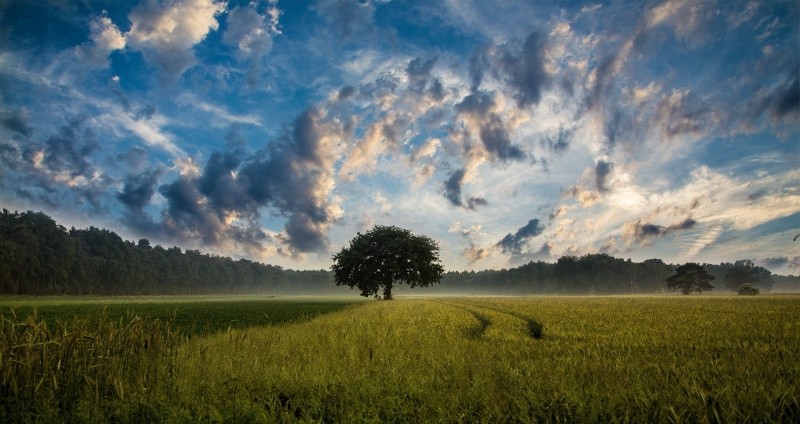This week’s Tradestreaming Radio is live. I discuss
[audio:https://66.228.46.202/wp-content/uploads/2010/11/TradestreamPodcast_November14_1.mp3]
Transcript
Hi, this is Zack Miller, and you’re listening to Tradestreaming Radio. I’m the author of www.newrulesofinvesting.com and the author of the recent book Tradestream Your Way to Profits: Building a Killer Portfolio in the Age of Social Media. And, Tradestreaming Radio is our home in the internet radio space, and we hope to use this forum to expound upon some of our ideas and bring in some interesting people who have ideas of their own that I think you would find quite interesting.
I, myself, am focused on sort of the intersection between online media and investing. And, my book, Tradestream Your Way to Profits, outlines eight strategies that call from my experiences as a business development person at Seeking Alpha, a hedge fund analyst, and now a independent asset advisor.
So we can just jump right into it.
So tradestreaming as a theory, as a philosophy is all about finding the most valuable information from the most valuable person with that information, making that available through social media. One of the strategies that I find most appealing from this vantage point is insider trading, right? So, tradestreaming is finding people who have a strategy that’s been proven to work either academically, or in practice, hopefully the marriage of the two.
Insiders, we’re talking about corporate insiders now, have the ability and have the demonstrated ability to outperform markets over the long-term. And, I devote an entire section of my book, an entire chapter, to an insider trading strategy. It’s a two-tiered strategy, and I wrote about it recently on the blog, check it out there. But, I talked about the Muzea model, a behavioral model. He was broker-sum-insider trading strategy guy named George Muzea, who wrote a book called The Vital Few vs. the Trivial Many: Invest with the Insiders, Not the Masses. And he attributes outperformance by insiders to a behavioral basis. So, he segments insider trading activity by looking at the behavior of insiders, and trying to get into their heads to better understand the rationale behind their trades.
So therefore if you were going to implement a strategy based upon Muzea you’d want to focus on who is doing the trading, what Muzea calls value insiders, 70% of trades done by insiders with a long-term view of their firm.
He also segments out catalytic insiders. These are corporate types not concerned with book value of their firm, but rather they see, you know, a temporary anomaly in the pricing of their stock and they may step in to buy or sell the stock.
I found that there was another model, the Seyhun model. Nejat Seyhun is a professor of business at the University of Michigan. Wrote a book called Investment Intelligence from Insider Trading. He creates a bit more detailed model where he creates a hierarchy of insiders ranking in order of their access to higher quality tradable information.
So starting at the top you have senior management, C-level executives who have their management finger on the pulse of their firms. Though they’re not allowed to trade on what’s called insider information, which would be, you know, private, or non-public information, that if made public would obviously affect the stock price. Definitely they have a view of their firm. You know, they see sales reports, they know about partnerships they’re working on. And, you know, they know better than anyone else the dynamics of their industry. They are quality players and when they step in and buy or sell their stock, particularly on the buy side, people should take notice.
Then next down you have officers, employees of the firm, not senior enough to make senior decisions, but definitely affect the operating of the company as a whole. You have directors, people who sit on the board of directors but are outside of the firm. They have very little information, right? So, they’re sitting at quarterly board meetings, or something like that. They’re not actually part and parcel of the day in/day out inside of a company. And then you have large share holders, these are hedge fund guys, institutional types who own more than 10% of the stock.
So the strategy here is, and you know, you can read the book for more information, but it’s to focus on active versus passive insider transactions. We want to focus more on the buy side. You know, particularly corporate insiders sell stock for all types of reasons, particularly in technology stocks. There’s options, you know, exercising all the time. And a lot of that is just noise. That’s people getting liquid. It’s diversifying out of their holdings. The research shows that on the buy side when somebody steps in with their own hard-earned money and decides to purchase their own company’s stock it’s a lot more indicative of future price movements.
So, we want to focus on buys, not sells. We want to look at clustering and consensus. Insider trading activity is a much better indicator of future movement in stock price when multiple insiders are buying at the same time, called a clustering, without a conflicting trade, and that’s called consensus. We want to look for three or more insiders stepping in and all participating in buying or selling their stock as an indicator.
This strategy works better looking at small caps. We want to mirror corporate insider buying, so less than a billion dollars is sort of the sweet spot for this strategy. We want to look for earning surprises. It’s a good idea to look for insider buying activity in firms that recently reported a positive earning surprise for some reason. You know, we’ll see insider buying as continued momentum play there. And bigger is better. Larger purchases are better signals than smaller ones. We want to look for purchases over 10,000 shares. Obviously, you know, how big the purchases will also depend upon the price of the stock. So, 10,000 shares in a stock that’s worth $1 is not necessarily a great signal, but in general that’s, we want to see a larger purchase. Obviously we want to see corporate insiders putting more money up to show more conviction.
So in all these methods, all these methods improve returns. The three most important determinants of quality are, to repeat, top executives. We want to see the C-level executives buying. We want to see them buying in small firms, right? The fact that somebody at 3M is buying is a good thing, but not as good as somebody, you know, at a smaller micro cap. And, we want to see a big position. We want to see them stepping up.
So, to quote a research report by Piotroski and Roulstone entitled Do Insider Trades Reflect Superior Knowledge About Future Cash Flow Realizations? They said we find strong evidence that insider trades are associated with the firm’s future earnings performance. Consistent with insider trading on the basis of both security misevaluation and private information about future cash flows. So, you know, obviously to do this it’s going to take some legwork, right? So, you know, I haven’t found a perfect system that mimics the Seyhun model. There are some premium sites that allow you to do such a thing.
You know, you can actually theoretically do this through using the SEC database, or through Yahoo Finance, which is free. A site called J3SG, which is kind of a funny name, but it’s a good site that follows insider activity. They have a free version and a premium version. The premium version actually does a lot of this for you. There’s Guru Focus, which a lot of people use.
A new blog, which I think is really helpful called Insider Monkey, which is following a lot of insider movements and expounding upon some of these theories that I’m talking about. Asif Suria has a site called SINLetter that actually does, you know, a rundown on insider buying and selling. Finviz is a screener that can be used to screen for some of these types of stocks. Insider Cow and Old School Value insider buy screener, are some of the resources that I put up there. You can find that all on the blog. I would definitely check out that strategy, that’s the insider trading strategy.
So, next up in Tradestreaming Radio for this week I wanted to focus on what we call ‘trend watch’. This is something that I’ve chosen that I think is interesting. I hope you find interesting. Today’s trend has to do with consolidation in sort of the second generator online broker platforms.
Obviously, you know, we have two big players, well, three big players in the online broker space. We’ve got Ameritrade, Etrade, and Schwab. The reason I stumbled upon that is because Schwab, you know, I don’t think is a classic online broker. Obviously they do have online brokerage access.
We’re seeing second generation platforms that emerged more recently begin to consolidate, and the first thing we saw last week is interactive brokers, it’s a platform that a lot of new investment advisors, registered investment advisors, RIAs, are building their portfolios on. They do a lot of this mirroring type thing where you can actually manage your portfolio and bring in managed accounts that are executed automatically when you make a change in the model portfolio.
Interactive Brokers took over a 6% position in trade station. We saw Ameritrade enter this fray with the ThinkOrSwim purchase. I guess that’s probably about 18 or maybe 24 months ago already, and reportedly in the industry that was a great purchase on their behalf $600, $700 million. I don’t remember the exact number.
And, now we’re seeing, you know, consolidation, or perhaps potential consolidation at the second generation brokers who really have built, you know, really powerful technology platforms. That’s what they are first and foremost. And they’re technology platforms that are attracting sort of the next generation investment advisor business. So, I’d keep your eye on that.
Next up on Tradestreaming Radio is our deal watch. Just this week we’ve launched Tradestreaming Marketplace We’re going out and sourcing the best of breed financial/investing products, negotiating on our community’s behalf and offering really valued added deals.
This week is what I like to call value investing in the sports betting marketplace. So, I like to tell the story about famed value investor Joel Greenblatt, who as you know probably as the author of The Little Book That Still Beats the Market. And, he’s the founder of The Magic Formula, which is posted returns of, you know, about 40% a year for 20 years. He explains his results when you ask him. It’s nothing more than a focus on what makes a good investment in the real world. And, he throws in a little sixth grade math to boot. In Greenblatt’s world this strategy extends to schooling. He’s also focused on turning around failing schools in the New York area, and he’s had great success with that.
So the way I think of it is value investing can be applied to an educational model, it can be applied to anything. I’m an investor who uses valued based principles in my investing strategy and tradestreaming, in my book. Everything that I’ve written about on my blog is about identifying and investing in low-risk/high-pay off targets. And, that’s what got me thinking about sports betting.
I’m not a gambler at heart, for sure not, but I do believe the internet has opened up new markets that weren’t easily accessible before. We’ve seen examples in online Forex, obviously offline Forex is a huge market. It’s extremely easy now to open up an online Forex account and be able to trade currencies. We’ve seen peer to peer lending, the prosper.coms of this world. I wrote about this in my book as well. This has social value for sure, but it’s also an opportunity for enterprising investors.
So, why would somebody bet on sports? There’s liquidity. You have marketplaces now where you can find bid and ask. There is some transparency. You can see sort of the, you know, price movements. You can get your hands on historical data, so you can build strategies that take advantage of this. It’s odds based success. So, just like investing, you know, you don’t have to be perfect 100% of the time, but if you can be more, you know, more than half the time right you can actually make money this way. There’s continuous pricing. And, what a lot of people like about it, and this is sort of the gambling aspect, is the instant gratification.
So, I was drawn to a new book on the market written by Daniel Fabrizio. It’s called Sports Investing: Profiting from Point Spreads. The title was compelling, obviously, because you know all of a sudden, you know, instead of betting it was investing in sports. That’s not quite accurate, but you know, it sort of took it out of the gambling realm and turned it into something that’s more familiar to me.
So, I like this book. It does a few things really well. It differentiates between investing and betting. It uses data to formulate some winning strategies, and a few of the strategies in the book are- one strategy is value, one’s contrarian, one’s momentum based.
There’s details on how these strategies work with each of the major sports, so football, baseball, basketball, hockey. Sorry, no soccer. There’s a section on Monte Carlo analysis to advise how to manage your portfolio and position size, this is sort of the bank roll in sports betting lingo. And it explains how to lower vigorish, which is the equivalent to a spread in a stock. This is where sports books make their money, their commissions.
It’s an introductory book. It’s very short. It’s not made for an advanced sports better, but for me, who’s a neophyte in this whole thing it was a good introduction, and gave me a little bit of meat to be able to go onto the next step.
Fabrizio doesn’t just write books, he actually has a full blown sports betting platform. He’s not a marketplace, but he has a research tool called sportsinsights.com
I took out a subscription there and basically all the theory that is, you know, elucidated in the book comes to life in Sports Insights. And Sports Insights was developed in part by a Quant from MIT. And, you know, in there you can get access to contrarian value strategies. There’s strong historical evidence to show that betting against popular opinion can be profitable, so obviously value investors know that. The same holds true in sports.
There’s a momentum strategy. Some investors like to let the winners run. And, sports investors can find strategies, odds-based strategies, that work in that way.
There’s also a fundamental analysis tool where you can rank a team, you know, based upon whatever is going on, you know, in that team itself, or in an individual player himself. And, just like you have in real life investing there’s special situations. So, you know, Sports Insights allows some betters to zero in on certain intangibles of the game, or the direct correlation of how two teams match up against one another.
It’s not perfect, and Fabrizio is the first to tell you that, and he warns against, in general, using any platform that makes bold and audacious claims.
I feel that having spent some time managing this system, it’s a great system, it’s a great way to get your feet wet in sports betting, particularly if you have the value investing bent. And, the deal is great. I mean, so we went out there, basically you get a $40 book, which is Sports Investing: Profiting from Point Spreads, Fabrizio’s book. You get six month premium access to Sports Insights, which is worth about $600. And, we’re putting together an exclusive webinar for anyone that purchases this package through Tradestreaming.com called The Three Secrets Investors Should Know to Make Money in Point Spreads. It’s going to be led by myself and by Dan, and it should be great.
And, on top of this there really is no risk. So, again, you want to lower your risk whenever you make a purchase, whenever you’re investing in anything. There’s a 30 money-back guarantee. So, you’ve really upped your odds for success. Check it out on the site. We’re selling it for $399. You know, it’s about 40% off retail price. Check it out. Let us know, and join the Tradestreaming revolution. Thank you for listening, and I hope you will join us again next week.













